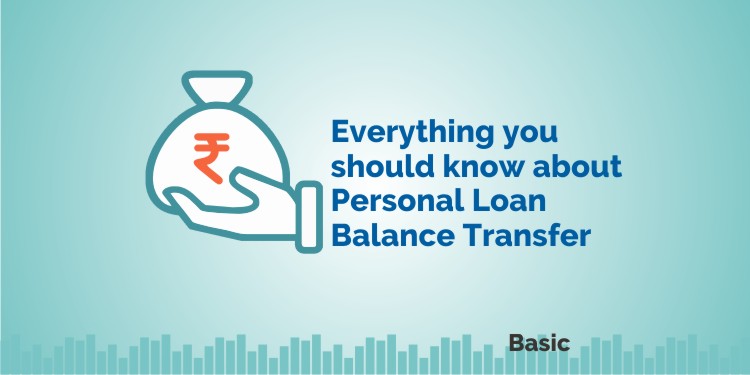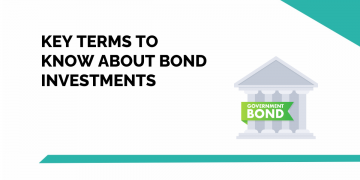Loan management is an important component of wealth management. A loan, despite having many advantages, creates a burden on our income because of interest payments. Fortunately, we, as borrowers are facilitated with a special option Known as Personal loan balance Transfer which provides us the following benefits:
- Reduce the burden of interest on our income; and
- Enjoy the benefits of lower Equal Monthly Installments (EMI) payments.
In this article let us discuss about Balance Transfer option:
What is a Personal Loan Balance Transfer?
In simple terms, this type of balance transfer occurs when you transfer your outstanding loan amount to another bank.
For example, suppose you have taken a personal loan with ICICI bank with –
Principal – ₹50,000; and
Interest – 12% p.a., for three years.
Your EMI for the 36 months will be ₹1660.72 per month.
After a year, suppose SBI reduces its loan rates to 9% and you decide to transfer your loan to this bank.
Your balance at the end of the first year will be ₹35,279.17.
If you decide to pay this amount to SBI over the next three years at 9% p.a. interest, your EMI will fall to ₹1,121.86 per month.
This is how this balance transfer works.
Why Should You Opt for a Personal Loan Balance Transfer?
Transferring your personal loan balance to another bank can have many benefits, as mentioned below –
i. Better Rates of Interest
The driving force between a loan balance transfer is the lower interest rate offered by other banks.
By taking up this low interest rate, you can reduce the burden of your repayment on your income.
ii. Longer Tenure of Loans
When you switch to another bank, you can negotiate for a longer loan tenure.
Why is that useful?
When you ask for a longer tenure, your EMI will reduce proportionately as well.
Suggested Read: Did you know that loan EMI Calculation can be so easy!
iii. Better Features
Depending on your credit history, other lenders can also offer you more features in exchange for using their loan facilities.
For example, suppose you have a positive credit history.
Other banks can offer you the following additional facilities as benefits –
- Waiver of the last EMI; or
- Zero processing fees, etc.
iv. Top-up Loan Facility
Some banks may even offer you a top-up loan facility after you transfer your loan balance to them.
A top-up loan facility means a situation where the lender lets you borrow over and above the agreed-upon loan amount.
Steps for Personal Loan Balance Transfer
The following simple steps are to be followed to successfully transfer your loan from one bank to another –
- Check the current rates you can get on personal loans for other banks.
- Calculate and check the estimated cost of transferring your loan balance.
If the charges of transferring the loan are higher than the interest foregone, one should re-evaluate their decision to transfer their loan.
- Shortlist all banks offering lower interest rates, and compare the benefits they offer.
- Apply to your current bank for –
- An NOC (Non-Objection Certificate); and
- A foreclosure letter.
- Apply for a loan at the new bank with the complete details of your previous payments.
- Obtain a sanction letter and execute a new loan agreement with the other bank.
- Take the loan disbursement from the new bank and deposit it to your old bank.
- After receiving disbursement from you, your old bank will consider the loan as paid and will close your loan account.
- What are the Charges Applicable to us for a Personal Loan Transfer?
There are two major charges that each bank will charge from a borrower who is transferring their loan to another bank –
Foreclosure Charges –
These are paid to a bank when their dues are paid in full, but before their due date.
This charge is applied because, the new bank will disburse the remaining loan balance to the old bank after the loan transfer.
This is a certain form of a loan foreclosure, and so it will be charged.
Processing fees –
These are charged by the new bank for the completion of the loan-taking formalities.
It ranges from ₹999 to 2% of the loan, depending on the bank’s policy and the loan amount concerned.
Eligibility Conditions for Balance Transfer
The following conditions have to be met if you want to transfer your loan –
i. You should have an active loan running from another bank.
ii. The loan amount you are transferring should be at least ₹50,000.
iii. You should have a clean EMI record for the last 12 months.
This means that –
- You should have no previous installment due to the banks; and
- You should have paid all your installments on time.
iv. You should have a good CIBIL score (credit score). Most banks prefer a score of 700 and/or above.
Documents Required for a Loan Transfer
Salaried Person
The following documents are required to complete a loan transfer –
- Duly signed application form for personal loan balance transfer, along with passport size photograph;
- Identity Proof (PAN card/driving license/passport/voter ID/Aadhaar Card etc);
- Age Proof (PAN card/driving license/passport/voter ID/Aadhaar Card etc);
- PAN Card copy (Mandatory);
- Address Proof (Aadhaar Card/Passport/ Landline Bill/ Latest Electricity bill/Rent agreement, etc.);
- Bank Statement for the last six months;
- Salary slip for the last three months; and
- Statement of personal loan from the current lender (for the loan that needs to be transferred).
Self-Employed Persons
The following documents are required to complete a loan transfer –
- Duly signed application form for personal loan balance transfer, along with passport size photograph;
- Identity Proof (PAN card/driving license/passport/voter ID/Aadhaar Card etc);
- Age Proof (PAN card/driving license/passport/voter ID/Aadhaar Card etc);
- Address Proof (Aadhaar Card/Passport/ Landline Bill/ Latest Electricity bill/Rent agreement, etc.);
- TAN (Tax deduction and collection Account Number) Card;
- Bank Statement for the last six months;
- Salary slip for the last three months; and
- Statement of personal loan from the current lender (for the loan that needs to be transferred).
Loan Tenure
Once you transfer your loan from one bank to another, you can negotiate for a tenure of your liking.
However, the tenure of repayment should be somewhere between 12-60 months (1-5 years).
Frequently Asked Questions (FAQs)
1.What is the time duration for transfer of loan?
The entire process of getting the loan transferred can take 4-8 days.
2.Do I have to submit any security or collateral for personal loan?
No, there is no collateral taken for taking up personal loans.
3. What are the costs involved in doing a balance transfer on your personal loan?
Apart from rate of interest, other charges include:
- Processing fee payable to new bank
- Pre-payment or foreclosure fee payable to existing bank
- Stamp duty on loan agreement in some states
4. When is it ideal to do a balance transfer?
It is ideal to transfer your loan when –
You are paying an interest rate on your personal loan which is higher than those rates available in the market; and
- The difference is more than 0.5% to 1%.
5. Do all banks offer balance transfer?
- At this point, you should consider the option of transferring your loan to a new bank.
No. Even though a loan transfer is available for all types of loans, it is not a facility offered by every bank.
6. Who can avail the balance transfer facility?
Any borrower who has –
- An existing personal loan; and
- He or she has paid at least 12 EMI’s regularly.
These borrowers are eligible to transfer their loan balance to another bank.
Conclusion
The option of being able to transfer loan balances has been created to protect the borrowers’ interest. One should carefully exercise this facility, after making sure that the costs of such transfer are as minimal as possible; and there is a clear reduction in your interest payment burden.
In order to get the latest updates on Financial Markets visit Stockedge








